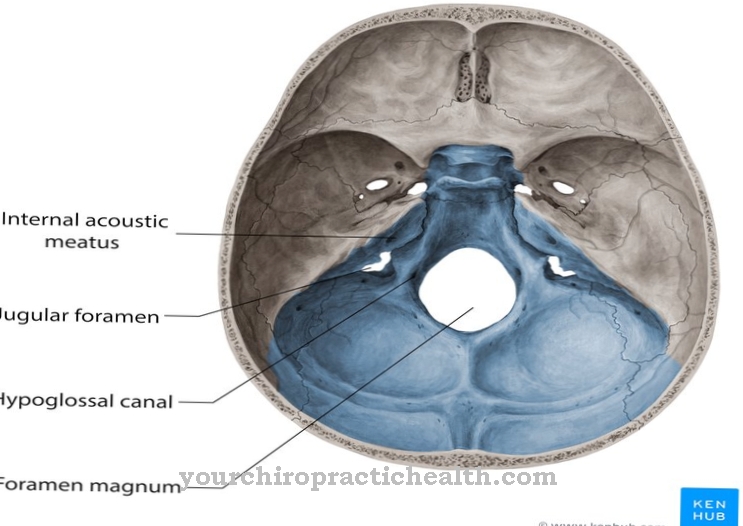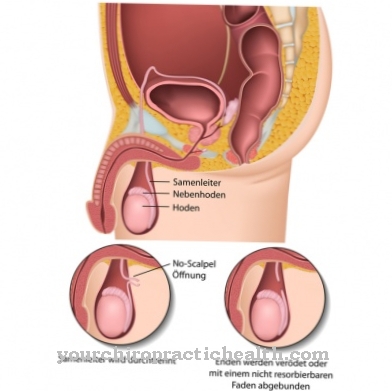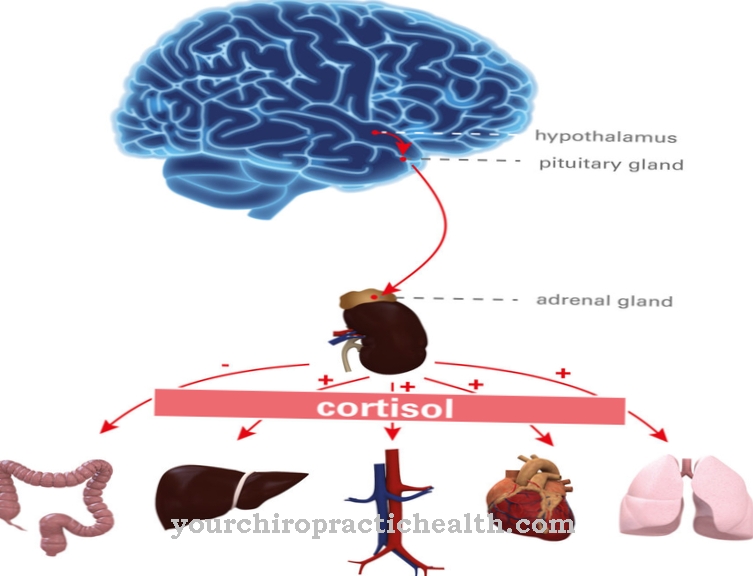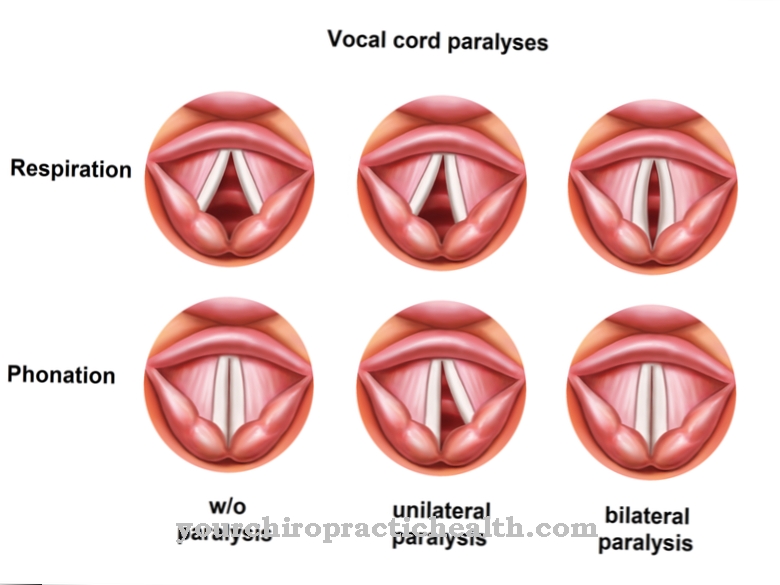The most important part of the motor system lies under the thalamus: the Subthalamus. It is located in the midbrain and receives nerve cell nuclei that control certain muscle activities. It is a pale core; its shape is reminiscent of a lens. That part is one of the regions of the human brain that has so far hardly been examined. For this reason, doctors repeatedly speak of an "uncertain zone".
What is the subthalamus?
As the name suggests, the subthalamus is hidden under the thalamus. Or rather, it can be found in the embryo under the thalamus; In the course of human development, the subthalamus is pushed aside by a thick cord filled with a white substance.
The subthalamus ends up in the cerebrum and is found next to the putamen. Its position is the main reason why it drives numerous anatomists to despair. The subthalamus is composed of the globus pallidus ("the pale nucleus"), the zona incerta ("the uncertain zone") and the nucleus subthalamicus. Even though the subthalamus was described as early as 1877, many medical professionals are still unsure of what the subthalamus does.
Today there is therefore no precise information on its function; mainly the descriptions and definitions are pure speculations. In the course of ontogenesis, the globus pallidus is displaced in the direction of putamen and - according to the experts - also plays an essential role in motor processes.
Anatomy & structure
The so-called zona incerta is located under the thalamus. The zona incerta represents a very small core area, which is surrounded by a white substance below and above, which medical professionals refer to as Forels fields H1 and H2. The subthalamic nucleus connects to the transition area below it and between the midbrain and diencephalon.
The nucleus, also known as the Luys body, STN or Corpus subthalamicum Luysi, is reminiscent of a biconvex lens. Laterally, separated by the internal capsule, lies the globus pallidus, which is reminiscent of a cone with its shape. Its tip points downwards and towards the center. It forms the main nucleus of the subthalamus. Functionally, it is one of the basal ganglia.
Function & tasks
The subthalamus is part of the motor control. It not only receives stimulating fiber access from the motor cortex, but also inhibiting impulses from the globus pallidus. The signals are sent to the inner segment and also to the substantia nigra. According to the doctors, the control loops are much more important than individual structures. The basal glands influence the execution of movements. The main loop is responsible for motor skills.
This runs from the putamen over the globus pallidus to the thalamus. Since the thalamus is inhibited by the globus pallidus, but itself inhibits the putamen, a double inhibition is subsequently generated so that the thalamus can send its exciting signals to the cortex. In the same process, the secondary loops become the main loops. A major loop also includes the subthalamic nucleus. In this way, an inner pallid segment is strengthened, so that there is an inner inhibition that acts on the thalamus. The secondary loop can thus prevent unregulated motor skills. But it is also the secondary loop that can become a problem in the event of damage.
Auguste-Henri Forel, a brain researcher from Switzerland, described "the uncertain zone" almost 130 years ago. The zona incerta is mentioned in many textbooks, but only very sparsely described. In many cases "the uncertain zone" is not even kept in the register. One reason why many scientists are still uncertain today which functions actually come from the "uncertain zone". However, there are conjectures and speculations. The zona incerta is not only intended to influence arousal, but also to control the activities of the viscera and be responsible for maintaining movement.
You can find your medication here
➔ Medicines against memory disorders and forgetfulnessDiseases
If the subthalamic nucleus is damaged, for example by an insult (stroke), the clinical picture of ballism develops. If the doctor diagnoses a unilateral disorder in the patient, he speaks of hemiballism. The affected person is no longer "master of his motor skills". The arms or legs are inadvertently "flung around"; a disorder that is not permanent and affects only one side of the body.
This is the opposite side of the damaged half of the brain. The subthalamus also repeatedly influences the symptoms of Parkinson's. To what extent the subthalamus is responsible for this, however, cannot be answered and puzzles many neuroscientists. However, a lack of dopamine in the subthalamus is known to make symptoms worse. If the lack of dopamine is compensated for, the resting tremor improves, which makes patients shiver. Using a new method, however, it is possible that the brain stimulation can be influenced.
Sick people receive electrodes that are inserted directly into the brain and continuously emit electrical impulses and thus control the overactivity of the subthalamus. Other diseases associated with the subthalamus are not yet known. Since so far only speculations can be made, doctors are unsure whether the subthalamus might not also be responsible for other diseases that are related to motor problems.
























.jpg)



